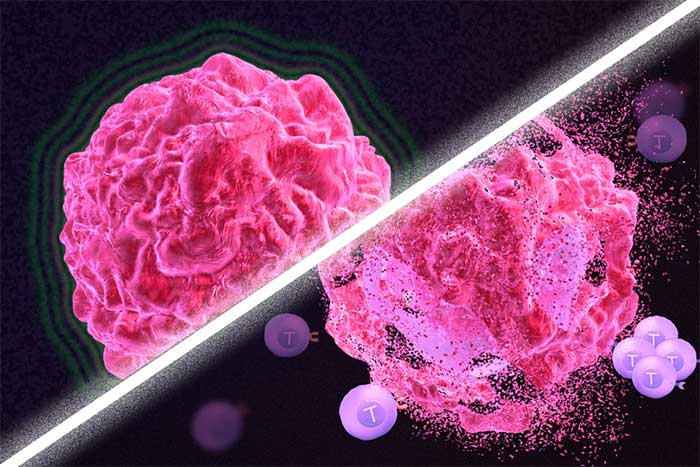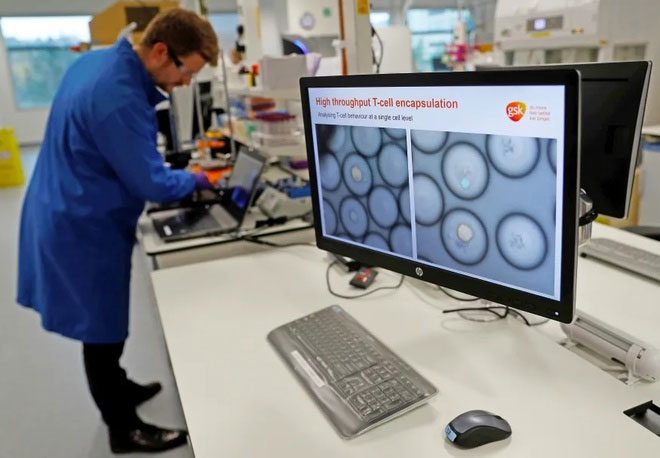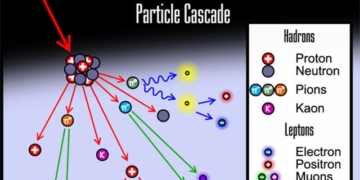Genetically Modified Microorganisms Eliminate Skin Cancer Tumors in Mice.
In a study published on April 13 in the journal Science, scientists at Stanford University School of Medicine discovered a completely new method for treating cancer.

These microorganisms have destroyed cancer cells in mouse skin. (Photo: MIT).
The researchers modified the genetic makeup of organisms using microorganisms and bacteria found on the skin to enable them to combat cancer. These modified microorganisms were then introduced into a group of cancerous mice. Surprisingly, the tumors gradually disappeared and diminished in size.
This type of bacterium is Staphylococcus, sourced from the fur of the mice, which was genetically altered to produce a type of protein capable of stimulating the immune system to fight against tumors in the body.
The scientists injected this Staphylococcus into the skin of the mice. The results showed that these microorganisms, once reintroduced into the fur of the mice, effectively killed skin cancer metastases present in the body, without causing any adverse reactions.
“It felt like magic. The experimental mice had cancer and serious tumors on their sides. We simply collected bacterial samples from the fur on their heads,” said Professor Michael Fischbach from Stanford’s Department of Bioengineering.
According to Engadget, the scientists’ discovery offers a new perspective on the microbiome and the bacteria present on animal skin. Fur is home to millions of bacteria, superbugs, and various fungi, yet their functions have not been extensively studied.

Scientists are exploring cancer treatment using microorganisms found in mouse skin. (Photo: Reuters).
In this case, the researchers discovered that Staphylococcus could activate cytotoxic T cells (CD8 T cells) to proliferate. These cells can directly secrete toxins that kill cancer cells or pathogens.
Consequently, they incorporated Staphylococcus into the production process of CD8 T cells to respond to certain antigens associated with skin cancer tumors. Upon infiltrating the corresponding tumors, these Staphylococcus bacteria rapidly multiplied and slowed the metastatic process of malignant tumors, ultimately eliminating them.
“We were shocked to observe the tumors gradually disappearing, especially as the area that vanished was quite far from where we injected the bacteria. It took us a while to believe what was happening before our eyes,” said Professor Michael Fischbach.
According to Engadget, the experiments conducted by the scientists at Stanford University School of Medicine still have many caveats. All of their experiments were performed on mice.
Biologically, the human body and mice are quite similar. However, some medications that are effective in mice may not work in humans. Currently, researchers at Stanford have not determined whether Staphylococcus will have the same effect on the human immune system.
Furthermore, human skin hosts a greater diversity of microorganisms, so scientists will need to find different microorganisms to modify. Additionally, this is a targeted treatment specifically for external skin tumors and has only been discovered recently. Therefore, researchers require more time to assess whether its benefits could extend to internal organ cancers.
The researchers indicated that they plan to test the Staphylococcus-based cancer treatment on real human bodies in the coming years. However, before that, they still need to conduct further experiments with mice and other animals. Scientists hope that this therapy will not only treat cancer but may also help combat infectious diseases.



















































